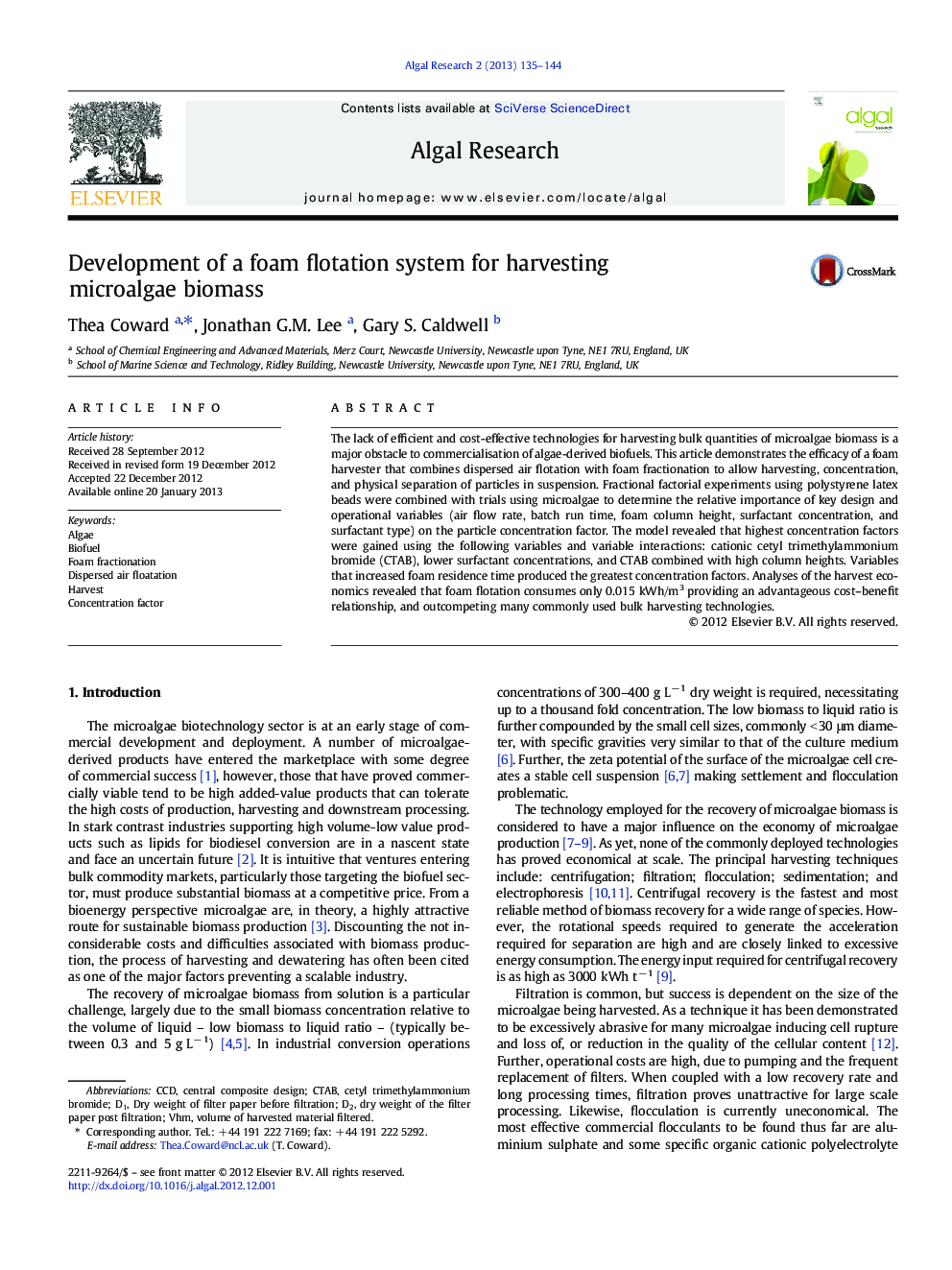| Article ID | Journal | Published Year | Pages | File Type |
|---|---|---|---|---|
| 1742125 | Algal Research | 2013 | 10 Pages |
The lack of efficient and cost-effective technologies for harvesting bulk quantities of microalgae biomass is a major obstacle to commercialisation of algae-derived biofuels. This article demonstrates the efficacy of a foam harvester that combines dispersed air flotation with foam fractionation to allow harvesting, concentration, and physical separation of particles in suspension. Fractional factorial experiments using polystyrene latex beads were combined with trials using microalgae to determine the relative importance of key design and operational variables (air flow rate, batch run time, foam column height, surfactant concentration, and surfactant type) on the particle concentration factor. The model revealed that highest concentration factors were gained using the following variables and variable interactions: cationic cetyl trimethylammonium bromide (CTAB), lower surfactant concentrations, and CTAB combined with high column heights. Variables that increased foam residence time produced the greatest concentration factors. Analyses of the harvest economics revealed that foam flotation consumes only 0.015 kWh/m3 providing an advantageous cost–benefit relationship, and outcompeting many commonly used bulk harvesting technologies.
► Foam flotation is an effective microalgae harvesting technique. ► Efficiency demonstrated using latex beads and microalgae cells ► The harvester allows harvesting, concentration, and physical separation of algae. ► Key factors: air flow, run time, column height, surfactant type and concentration. ► Foam residence time is a vital outcome.
